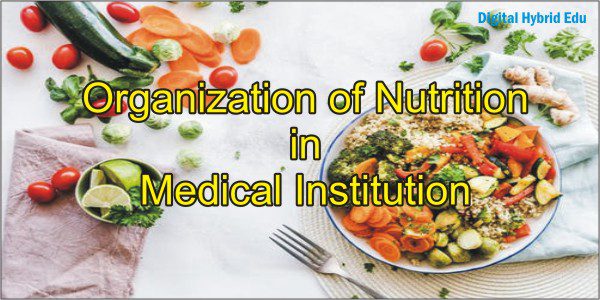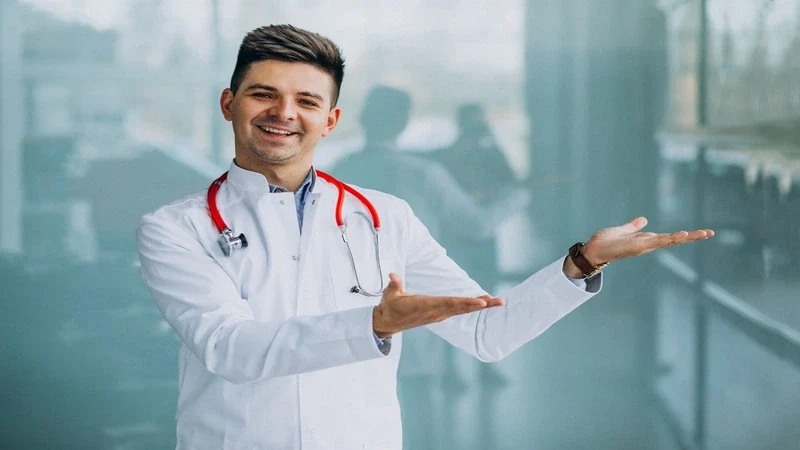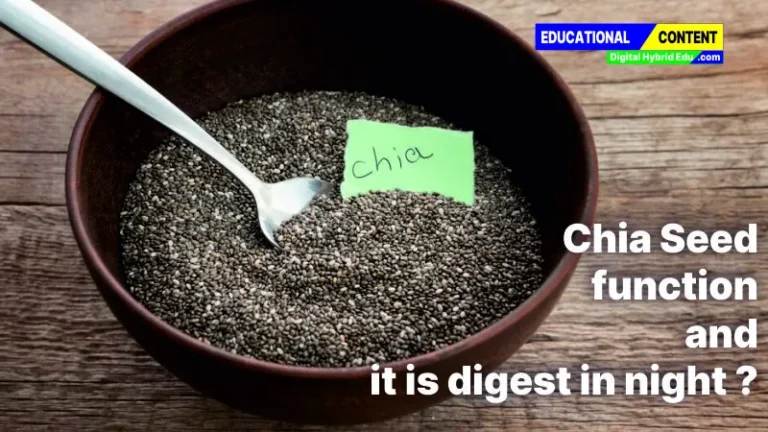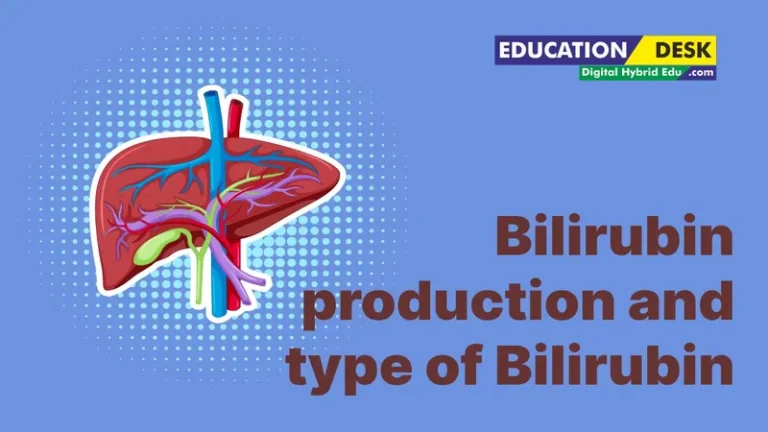Organization of nutrition in medical institution
Organization of nutrition:
Table of Contents
ToggleRational nutrition is an important condition of preserving and maintaining of health.
- Throughout the whole life metabolism and energy exchange is constantly happening in the human body.
- Sources of building materials and energy are the nutrients coming with food.
The main components of food
- Proteins,
- Fats,
- Carbohydrates,
- Minerals,
- Vitamins
- Water
Proteins Function:
- Building material for new cells and tissues.
- Building material for enzymes, hormones, hemoglobin, immune bodies.
- Regulation of metabolism.
- Perform transport function (for example, transport bilirubin, hemoglobin).
Proteins are not formed in the body, they come with food.
The source of protein is meat, fish, dairy products, cereals, pasta, eggs.
Fats Function:
- Provide 25-30 percent of the energy needs of the organism;
- Take part in thermal regulation;
- Conductors of vitamins A, D, E;
- Provide the intestinal absorption of certain food substances.
There are animal and vegetable fats.
Sources of fats are vegetable oils, animal oils, cream, sour cream, meat fat, legumes.
Сarbohydrates Function:
- main source of energy in the body (55-58%)
Types of carbohydrates:
- Simple carbohydrates
- Complex carbohydrates
Simple carbohydrates have a sweet taste and they are easily digested by the body. Glucose is used by the body as a source of energy for muscle contractions, including the heart muscle, and for nutrition of brain.
Complex carbohydrates are fiber, starch and pectin substances. Fiber is practically not digested in the body. These carbohydrates stimulate bowel function and create conditions for the reproduction of beneficial microorganisms in the intestine.
Sources of carbohydrates are vegetables, fruit, honey, confectionery, bread, sweet drinks, cereals, legumes, nuts, wheat bran.
Nutrients Perform functions: Three Function
1) Plastic function. Provision of development and continuous updating of cells and tissues.
2) Energy function. Input of energy which is required at rest and at any stress.
3) The regulatory function. Delivery of nutrients necessary for the formation of enzymes, hormones and other regulators of metabolic processes.
Minerals (Macro-and Microelements)
Macronutrients
- Calcium.
- Phosphorus
- Potassium
- Sodium and chlorine
- Magnesium
Microelements
- Iron
- Iodine
- Fluorine
- Copper
Details in Minerals (Macro-and Microelements)
Calcium.
- Calcium regulates the exchange of nutrients between the cell and intercellular space, providing the transmission of nervous excitement, and muscle contraction.
- Calcium is a “construction material” for bones and teeth, it is involved in blood clotting, it reduces the permeability of the vascular wall. Sources of calcium are dairy products.
Phosphorus
- Phosphorus provides normal growth of bone and tooth tissues, takes part in metabolic processes in the nervous and muscular tissues, liver and kidneys.
- Phosphorus is contained in cheese, cottage cheese, eggs, meat, fish, caviar.
Potassium
- Potassium is involved in the regulation of water-salt metabolism, the functioning of the muscle tissues, including the heart.
Potassium is contained in dried fruits, sea cabbage, potatoes, legumes, peaches, oatmeal.
Sodium and chlorine
- Sodium and chlorine. Sodium plays an important role in the process of intracellular and intercellular exchange.
- Sodium and chlorine also play an important role in the secretion of hydrochloric acid in the gastric juice.
Sodium and chlorine enter the body in the form of common salt.
Magnesium
- Magnesium – provides normal metabolism of about 300 enzymes. Especially actively magnesium is involved in the processes of energy use.
- Magnesium stabilizes the bone structure and gives hardness to the bones.
The sources of мagnesium are wheat bran, dried fruit, wheat, oatmeal, legumes.
Iron
- Iron is involved in hematopoiesis, breathing, redox reactions and immune-biological processes.
- Iron is part of the hemoglobin in red blood cells, muscle myoglobin, the most important enzymes.
- Sources of iron are meat products, cereals, legumes, bread, eggs, fruits (little).
Iodine
- Iodine – more than 60 % of received iodine consumes the thyroid gland and uses in the synthesis of hormones.
- Sources of Iodine are sea fish and seafood (shrimps, mussels, seaweed, etc).
Fluorine
- Fluorine – determines the condition of the bone tissue (its strength and hardness, the proper formation of bones); state of dental tissue, growth of hair and nails.
Copper
- Copper is necessary for the normal process of blood formation, tissue respiration and work of the immune system.
- Sources of copper are meat, fish, seafood, cereals, potatoes, apricots, pears, gooseberry
Vitamins
- Vitamins are the regulators of metabolism. Most vitamins are not formed in the body or they are formed in small quantities (e.g. by intestinal microflora).
- An insufficient supply of one vitamin occurs hypovitaminosis,
- An insufficient supply of several vitamins – it leads to polyhypovitaminosis.

CLASSIFICATION OF VITAMINS
Water-soluble vitamins:
- C,
- P,
- B1,
- B2,
- B6,
- B12,
- Niacin (vitamin PP),
- folic acid,
- Pantothenic acid,
- Biotin, and choline
Fat soluble vitamins:
- vitamin A (retinol),
- vitamin D,
- vitamin E (tocopherol),
- vitamin K.
Vitamin-like substance:
- Pangamic acid (B15),
- Orotic acid (B13),
- lipoic acid,
- Myoinositol,
- Vitamin U and others.
Vitamin C (function)
- Participates in the exchange processes;
- Increases the body’s resistance to infections;
- Provides collagen formation;
- Effects on the nervous and endocrine system, liver;
- Regulates cholesterol metabolism;
- Promotes digestion of protein, iron and other substances.
Sources of vitamin C are berries, vegetables, fruits.
- Vitamins В Regulate the function of the cardiovascular, digestive, endocrine, central and peripheral nervous systems. Sources meat, fish.
- Vitamin B12 is necessary for normal blood formation. Source – livers of fish and animals.
- Vitamin A is necessary for skin and view. Source – liver of animals and fish, eggs, caviar.
- Vitamin D regulates the exchange of calcium and phosphorus. Source – cod-liver oil, butter, etc.
- Vitamin К is involved in blood clotting. Spinach, sorrel, cabbage, pumpkin, tomatoes, and liver are rich with vitamin K.
Principles of Rational Nutrition for a Healthy Person
- Rational nutrition – provides growth, normal development and human activity, improves health and prevents disease
- The First Principle: Energy Balance.
- The Second Principle:Balanced Diet.
- The Third Principle: Dietary Regime.
- The Fourth Principle: The Variety of the Diet.
The First Principle: Energy Balance.
- Energy value of a daily ration depends on sex ( for women it is 10 % lower), age (in older it is lower), physical activity, profession.
- For example, energy consumption in person of mental labour is about 2000 – 2600 kcal, in sportsmen – 4000 – 5000 kcal per day.
The Second Principle:Balanced Diet.
- Proteins, fats, carbohydrates should enter the body in strict ratio (1:1:4).
The Third Principle: Dietary Regime.
Nutrition Should be:
- Divided (3 – 4 times a day),
- Regular (at the same time),
- The intervals between meals are 2-3 hours,
- The last meal should be not later than 2 – 3 hours before bedtime.
- The daily ration should be distributed as follows: Breakfast – 25%, lunch – 30%, snack – 20%, dinner – 25% of the daily ration.
The Fourth Principle: The Variety of the Diet.
- Daily, the organism should get about 70 ingredients, many of which are irreplaceable, i.e. they are not synthesized by the body, but come only with food.
The principles of clinical nutrition
Dietology – the science of clinical nutrition
- Nutrition of patients received considerable attention at all times. Hippocrates believed that at different stages of the disease, we must choose the right food.
- A major contribution to the science of nutrition and dietetics was made by Russian scientists. They identified many of the main principles of modern nutritional science.
DIET THERAPY – Method of treatment of various diseases by a special diet.
There are 15 diets for various diseases.
DIET – the daily amount of food for the patient for the period of the disease or to prophylaxis.
Clinical nutrition should be based on the principle of rational nutrition for a healthy person.
The principles of clinical nutrition:
- Increase of frequency of eating to 5 – 6 times a day.
- Various menu (Monotonous food reduces appetite).
- Correct cooking of foods:
- Mechanical sparing – crushing of food
- Chemical sparing – exception annoying and indigestible products (smoked food, marinades, spicy and fatty meals)
- Thermal sparing – exception of very cold or very hot- food. Temperature of the food 15 ° C to 60 ° C.
- Heat treatment process – boiling in water or by steam.
Organization of nutrition in the hospital
- General management of nutrition is performed by the chief doctor. Dietitian or dietary nurse are responsible for organization of nutrition.
- Doctor prescribes the diet to the patient. He writes the number of the diet in the medical history (medical card) and treatment sheet.
- Every day nurse makes a list of patients for the canteen and the senior nurse.
She indicates in list :
- Surname Name
- Room Number
- Diet Number

Organization of Feeding of Patients
Active nutrition
- The patient is taking food independently in canteen or in the hospital ward (if the patient has ward regime).
Passive nutrition
- Food intake is carried out with the help of a nurse.
- Contingent: seriously ill and weakened patients, old patients, patients in strict bed regime, psychoneurological patients.
- Feeding seriously ill patients, a nurse performs at the bedside of the patient.
Artificial nutrition
Artificial nutrition
- Artificial nutrition is the introduction of food through the gastrointestinal tract or intravenously into the organism of the patient.
Types of Artificial nutrition: There are several
- Enteral nutrition
- Parenteral nutrition
Enteral nutrition
Enteral nutrition – nutrients enter through the gastro-intestinal tract with the help of gastric tube.
The ways of the introduction of nutrient mixtures:
- Nutrition with the help of nasogastral tubes.
- Nutrition with the help of stoma (this hole, created surgically, this hole connects the hollow organ with the environment):
- Gastrostoma (hole in the stomach),
- Duodenstoma (hole in the duodenum),
- Jejunostoma (hole in the jejunum).
Indications for enteral nutrition are almost all situations when a patient with a functioning gastrointestinal tract cannot meet the needs for protein and energy in a usual oral way.
Indications for enteral nutrition:
- Neoplasms, especially localized in a head, neck and stomach.
- Disorders of the Central nervous system: coma, stroke and others.
- Radiation and chemotherapy in case of Oncology.
- Gastrointestinal tract diseases: Crohn’s disease, malabsorption syndrome, short bowel syndrome, chronic pancreatitis, ulcerative colitis, liver and biliary tract
- Nutrition in pre- and early postoperative periods.
- Trauma, burns, acute poisonings.
- Infectious diseases (botulism, tetanus and others).
- Mental disorders: anorexia nervosa, severe depression.
- Acute and chronic radiation injuries.
Also Read this Article
Nursing the origination of Medical care
Сontradictions to enteral nutrition
- Clinically expressed shock.
- Intestinal ischemia.
- Full bowel obstruction.
- Refusal of a patient or his guardian from holding enteral nutrition.
- Ongoing gastrointestinal bleeding.
- Acute pancreatitis.
- Severe forms of malabsorption.
- Gastrostoma. This hole connects the stomach with the environment
- Parenteral nutrition- introduction of nutrients intravenously.
There are two Types of Parenteral Nutrition:
- Partial Parenteral Nutrition
- Full Parenteral Nutrition
- Partial Parenteral nutrition is appointed for a short time in addition to the normal diet of the patient.
- Full Parenteral nutrition provides the entire volume of the daily needs of the body in plastic and energy substrates.
Indications for full parenteral nutrition
- The preoperative period in patients with gastrointestinal tract diseases with the expressed indigestion.
- The postoperative period after extensive operations on the organs of abdominal cavity.
- Post-traumatic period (severe burns, multiple injuries).
- Neuropsychic disorders.
Contraindications for parenteral nutrition:
- Shock
- Allergic reactions to components of parenteral nutrition.
- Refusal of a patient (or his guardian).
- Terminal cancer patients.
- Currently the following ways of introduction are used:
Through a peripheral vein.
Through the subclavian vein with the help of the central catheters.
Medications for parenteral nutrition are divided into two groups:
1.Donor of energy – solutions of carbohydrates – monosaccharides and spirits, fatty emulsions
2.Donor of plastic material – amino acid solutions
Remedies for parenteral nutrition compose from the following components:
1.Carbohydrates and spirits – the main sources of energy.
2.Sorbite 20% and xylite – additional sources of energy with glucose and fat emulsions.
3.Fats – the most effective energy substrate is introduced in the forme of a fat emulsion.
4.Proteins – an important part to build tissues, blood, synthesis of hormones, enzymes.
5.Saline solutions – simple and complex, introduced for normalize water-electrolytic and acid-base balance.
6.Vitamins, microelements, anabolic hormones also include in complex of parenteral nutrition.
Feeding the critically ill with a spoon or drinking bowl
Algorithm of action:
- Hygienic processing of hands.
- Inform the patient about the procedure and get his consent.
- Ventilate the room, fix bedside table.
- Give the patient a comfortable position – half-sitting (Fowler’s position).
- Wash hands of patient, put on chest napkin.
- Wash hands and bring food to the patient (temperature of the food 50 ° C). Bring the spoon to his mouth, to feed in small portions, slowly.
- Offer a drinking, drink from a invalid’s cup small portions.
- Wipe the patient’s lips with a napkin after eating.
- Offer to rinse mouth after eating.
- Remove dishes.
- Give the patient a comfortable position.
- Wash hands.
Feeding the patient by a Nasogastric Probe
Purpose: Provide the patient with the nutrition .
Equipment: Sterile: Janet’s syringe volume, tray. Non sterile: phonendoscope, nutrient mixture (38 – 40° C), warm boiled water 100 ml, waste container class «A» and «B».
Algorithm of actions:
- Warn the patient about the procedure, to obtain the consent.
- Give to the patient a comfortable position – position of Fowler.
- Conduct hygienic processing of hands, put on gloves.
- Сarrying out auscultatory test. Dial into the Jane syringe 10 to 15 ml of air. Connect the syringe to the nasogastric probe and enter the air. Listen sounds in epigastrium using the stethoscope. (If the probe is in stomach, we hear gurgling sounds).
- Prepare the nutrient mixture (temperature 38 – 40 °C)
- Dial into the Janet‘s syringe the nutrient mixture (300 ml), connect syringe with the probe. Raise it to 50 cm Above the patient’s body.
- Provide the gradual flow of nutritive mixture (300 ml). Nutrient mixture must be introduced during 10 minutes.
- After evacuation of the syringe to disconnect the syringe from the probe, to close the probe by lid.
- Fill the Jane‘s syringe with 50 ml with boiled water.
- Remove the lid, connect the Janet’s syringe to the probe, rinse the probe.
- Disconnect the syringe, close the distal end of the probe by lid.
- Fix the probe, give the patient a comfortable position.
- Remove gloves, wash hands.
Care for Nasogastric Probe
Purpose: prevent irritation of the mucous membranes of the nose, ensuring the patency of the probe.
Equipment. Sterile: Jane syringe, gauze napkins, tray, glycerin (vaseline), saline or a special solution for washing probe, tray. Non-sterile gloves, stethoscope, tray, adhesive plaster.
Algorithm of actions:
- Warn the patient about the procedure, obtain the consent.
- Conduct hygienic processing of hands, put on gloves.
- Сontrol the location of the probe: ask the patient to open the mouth (probe should be visible in the throat).
- Сarrying out auscultatory test. Dial into the Jane syringe 10 to 15 ml of air. Connect the syringe to the nasogastric probe and enter the air. Listen sounds in epigastrium using the stethoscope. (If the probe is in stomach, we hear gurgling sounds).
- Take care of the oral cavity: moisten with saline mouth and lips (to make every 3-4 hours).
- Rinse the probe with of saline. Fill the syringe with saline (20-30 ml). Connect the syringe to the probe, slowly introduce the liquid into the probe. Aspirate the liquid, to pay attention to her appearance and pour in a separate container (to make every 3 hours or prescription of doctor).
- Inspect the place of insertion of the probe (nasal passage), reveal for signs of irritation of the skin.
- Clear outer nasal passages by gauze napkins, moistened with saline.
- Apply glycerin (vaseline) on the mucous membrane of the nose of the contact area with the probe.
- If fixative adhesive plaster has peeled off or heavily soiled, replace it.
- Disinfect and dispose of used materials.
- Remove gloves, wash hands.
Feeding by Gastrostomy
Purpose: to provide the nutrition of patient
Equipment. Sterile: Jane’s syringe 300 ml, gauze napkins, tray. Non sterile: gloves, phonendoscope, nutrient mixture 38 – 40 ° C, warm boiled water 100 ml, water with soap, ointment or paste, waste container class «A» and «Б».
Algorithm of actions:
- Warn the patient about the procedure, obtain the consent.
- Give to the patient a comfortable position – position of Fowler.
- Conduct hygienic processing of hands, put on gloves.
- Heat up nutrient mixture to a temperature of 38 – 40° C.
- Put a gauze napkins under the outer part of the gastrostomy tube in epigastric area.
- Conduct a visual inspection of the outer part of the gastrostomy tube and skin, surrounding the gastrostomy.
- Remove the lid of gastrostomy tube, connect the Janet’s syringe with nutrient mixture to distillation foramen of gastrostomy tube.
- Introduce the nutrient mixture in stomach by small portions.
- After the introduction of the nutrient mixture, rinse gastrostomy tube with boiled water: Fill the syringe with boiled water (100 ml). Connect the syringe to the tube, slowly introduce the liquid into the tube.
- Disconnect the syringe, cover the foramen of the tube with a sterile napkin, apply a lid (forceps).
- Conduct toilet of gastrostomy: Wash skin with soap and water around the gastrostomy, dry with napkin, apply a layer of ointment or paste, apply a sterile napkin around the gastrostomy tube.
- Remove gloves, wash hands.
Also Read this Article
Infectious safety Nosocomial infections Prevention of nosocomial infections
Characteristics of Medical Diet
Diet N 1
Indications: diseases of the stomach with increased secretion of gastric juice (gastric ulcer and duodenal ulcer)
Purpose: Chemical, mechanical and thermal sparing the gastrointestinal tract with good nutrition, limitation of stimulation of secretion, gastric mucosal irritants; reduction of inflammation, improvement of healing of ulcers.
General characteristics: Food is prepared mashed, boiled in water or by steam (Bland diet). Eating 5 – 6 times a day.
Exclude or reduce: very hot and cold dishes, all spicy and fried foods.
Diet N 2
Indications: chronic gastritis with insufficient secretion of gastric juice, enteritis and colitis in the recovery period.
Purpose: stimulate the secretory function of the stomach, normalize motor function of the stomach and intestines, decrease putrefactive and fermentation processes in the gastrointestinal tract.
General characteristics: Bland diet. Eating 4 – 5 times a day in small portions.
Exclude or reduce: foodstuff that irritate the mucous membrane and hard to digest, very cold and hot meals.
Diet N 3
Indications: bowel disease with constipation
Purpose: stimulate peristalsis and defecation (bowel movements)
General characteristics: physiologically complete diet with foods which intensify motor function and defecation; food is not crushed, boiled or steamed, baked, vegetables and fruits (raw or cooked), drinks at night – sour-milk products.
Exclude or reduce: foodstuff which intensify fermentation and putrefaction in the intestine, eating – 4 – 6 times a day.
Diet N 4
Indications: acute diseases and exacerbation of chronic intestinal diseases with frequent diarrhea
Purpose: reduce inflammation and fermentation in the intestine
General characteristics: Bland diet. Significant mechanical, chemical, thermal sparing of gastrointestinal tract, prepared liquid, semi-liquid, pureed meals, cooked in water or steamed.
Recommended plentiful drink, eating 5 – 6 times a day in small portions.
Exclude or reduce: products which intensify secretion of the digestive system, processes of fermentation and putrefaction in the intestine.
Diet N 5
Indications: liver disease (hepatitis, cirrhosis); gallbladder disease
Purpose: normalization of the liver and gall bladder.
General characteristics: Bland diet. Small limitation of fats. It is recommended plenty of vegetables and fruits. Dishes are boiled and baked and steamed
Exclude or reduce: stimulants of secretion, spice, infusible fats, fried foods, foods rich in cholesterol.
Diet N 6
Indications: gout and kidney stones (urolithiasis) with formation of urine acid calculus.
Purpose: normalization of protein metabolism, decrease in the formation of uric acid.
General characteristics: Increase the consumption of vegetables, dairy products.
Exclude or reduce: limit salt, protein and fat (meat and fish). Exclude spices.
Diet N 7
Indications: acute and chronic nephritis
Purpose: reducing the burden on the kidneys.
General characteristics: Low protein/
Low salt. Protein content is limited, fats and carbohydrates in the normal range, with moderate chemical sparing.
Exclude or reduce: limit salt, protein. Amount of liquid is reduced to 1 liter. Exclude spices.
At the acute glomerulonephritis and chronic nephritis with renal deficiency recommended diet without salt, with a limitation of proteins. Conduct strict control for the amount of fluid and the amount of urine.
Diet N 8
Indications: adiposity as an basic disease or concomitant at the other diseases.
Purpose: normalize body weight.
General characteristics: Low caloric diet.
Increased the content of protein; vegetables and fruits in enough amount. Use sugar substitutes for sugary foods and drinks. Meals are boiled, steamed, baked. Temperature of meals is usual. Eating 5 – 6 times a day.
Exclude or reduce: limitation of carbohydrates and fats, limitation of salt, flavoring spices, extractives which increase appetite;
Diet N 9
Indications: diabetes of mild and moderate severity.
Purpose: the normalization of carbohydrate metabolism
General characteristics: Low caloric diet. Proteins above the physiological norm. Increased content of vitamins, vegetables.
Exclude or reduce: Moderate limitation of carbohydrates and fats, cholesterol. Exclude sugar and sweets.
Cooked boiled, baked and stewed meals.
Immediately after insulin injection the patient must receive the food containing carbohydrates.
Diet N 10
Indications: Cardiovascular disease (heart failure, hypertension)
Purpose: normalization of cardiac function.
General characteristics: Fat free and salt free diet. Content of protein – physiologically norm. Increased content of vitamins, potassium, magnesium and dietary fibers. Food is crushed, boiled. Temperature of food is usual. Eating – 5 – 6 times a day in small portions.
Exclude or reduce: Reduced content of animal fat, limited salt, free liquid (maximum – 1.2 liters), cholesterol.
Diet N 11
Indications: tuberculosis at the absence of internal diseases.
Purpose: stimulation of immunity.
General characteristics: high-caloric diet with high content of protein and vitamins, moderate increase fats and carbohydrates, vitamins, mineral substances. Salt and fluid is in the normal range. Usual cooking with saving of extractives; spices is allowed. Eating 4 – 5 times a day.
Exclude or reduce: Infusible fats, pastry.
Diet N 12
Indications: Functional diseases of the nervous system
Purpose: Restoration of normal functioning of the nervous system.
General characteristics: full nutrition. Recommended dishes from the liver, tongue, dairy products and legumes containing salts of phosphorus
Exclude or Reduce: Hot spices, strong broth, smoked meat, fatty and fried foods, alcohol, strong tea, coffee, limit meat and salt.
Diet N 13
Indications: acute infectious diseases during the fever
Purpose: Reduction of irritating action of food on the inflamed tissue of the pharynx and larynx, reducing the load on the digestive system during intoxication, fever and bed rest, increased immune protection, creating favorable conditions for recovery.
General Characteristics: content of protein at the lower boundary of the physiological norm, moderate limitation of fats, carbohydrates; fluid in large amount (2 liters and more ) in the form of drinks with vitamins (juice). Food is prepared mashed, boiled in water or steamed.
Exclude or Reduce: fatty, salty, crude cellulose. Increase the salt at the profuse sweating, profuse vomiting.
Diet N 14
Indications: Kidney stones (urolithiasis) with alkaline reaction of urine
Purpose: Acidification of the urine.
General characteristics: the content of proteins, fats, carbohydrates is normal. Introduced in the diet products which changes the reaction of urine in acid side (bread, baked food, cereals, meat, fish). Free liquid 1,5 – 2 liters.
Exclude or reduce: most vegetables and fruits, dairy products
Diet N 15 (Common Table)
Indications: various diseases in the absence of indications for special diets and at the normal condition of the digestive system.
Purpose: provide physiological needs in nutrients and energy.
General characteristics: the content of proteins, fats, carbohydrates and calories correspond to nutritional standards of a healthy person not engaged in physical labor. Vitamins – in higher amount. Food consists of a various products. Spices is in moderate amount. Eating 4 times a day.
Excluded fatty meals, pastry.
Diet N 0 –Surgical Diet
Indications: after surgery on the gastrointestinal tract
Purpose: sparing of the digestive tract
Diet 0А – only liquid (water, juice, tea, defatted meat broth, Liquid fruit jelly (kissel)
Diet 0Б – in food added liquid kasha (porridge).
Diet 0В – add in food white crackers, fermented milk product .
Free liquid 2 liters. Eating 6 times a day.
Download PPT Organization of nutrition in medical institution






